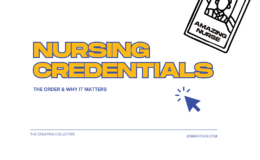Four years ago Diane Forster-Burke, MS, RN, professor at Westminster College in Salt Lake City, was looking for a way to recharge her teaching and utilize different education strategies to drive home the ethics of every day healthcare decisions nurses and other healthcare professionals make in routine practice. A colleague directed her to The Anatomy of Care, a serious role-playing game developed by WILL Interactive and MedStar Washington Hospital Center to improve customer service and increase patient satisfaction.
Professor Forster-Burke is now in her fourth year utilizing The Anatomy of Care game with undergraduate BSN students in their leadership capstone course. Forster-Burke states that even though there are no course points for how student groups progress through the game, the student nurses make decisions on a case-by-case basis and watch the expected and unexpected outcomes of their decisions; seeing senior nursing students “sit forward in their seats, engaged, interacting, and often laughing” during an 0800 class is worth it. She reiterates several times the safety of the simulation; “no one gets hurt.” Students can see the preferred choices as well as the worst-case scenarios of their decisions.
David Versaw, WILL Interactive CFO, explains The Anatomy of Care is used in several acute care hospitals and is sold through various distributors. The simulation methodology, which allows professionals and professionals in training to “step into someone else’s shoes, has shown dramatic improvements in HCAHPS scores, and WILL Interactive is even in the process of pursuing continuing nursing education credits for the course.
If you’re like me and sometimes roll your eyes at nursing school simulations, you should view the demo. I agree with Forster-Burke that the game focuses on real-world pressures intertwined with patient care – like the nurse taking a personal call at the nurse’s station in the midst of patient care needs. “It really gets students thinking,” explains Forster-Burke, “about the role of the nurse as an advocate.” The game has quite the decision algorithms to allow for a broad simulation experience.
Simulation in professional education is not new, and role-playing games are increasingly providing “edutainment,” or education in the form of entertainment. Still, nursing education seems to be a late adopter to such technological education innovation. Simulation mannequins have sprinkled nursing education programs going on 15 years now, yet the education strategy is omitted from numerous programs due to financial and other barriers. Web-based simulation programs like The Anatomy of Care could be one solution to help undergraduate nursing students bolster their critical-thinking skills and decision making.
Have you ever used The Anatomy of Care or any other simulation game in your nursing education?







Article Comments